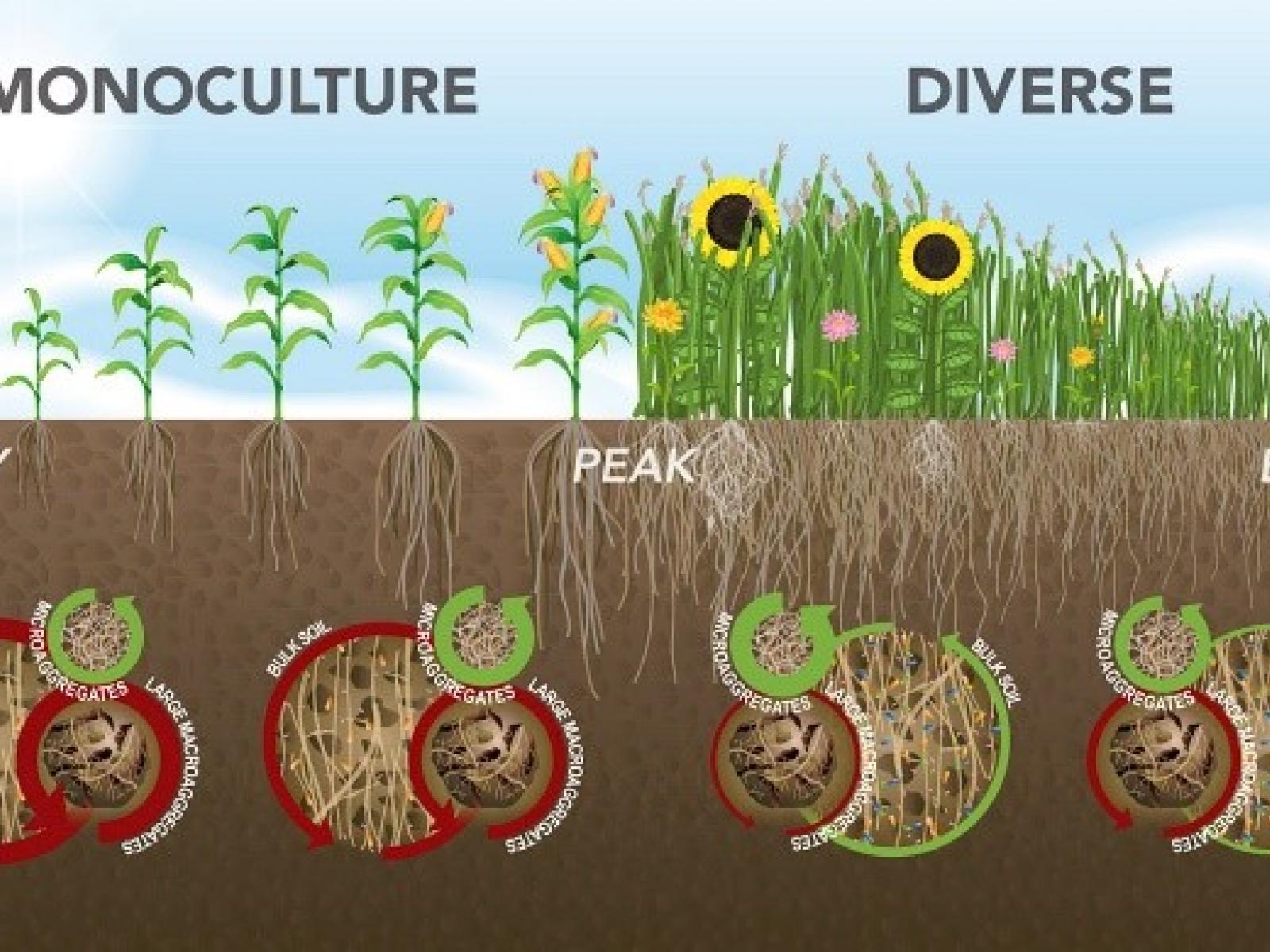Diversity and Function Within Soil Microbial Communities
How spatial structures of soil microorganisms change across years and seasons, reveal the ecological impact of varying management practices.

The Science
The microbial communities within the loose, friable aggregations of organic and mineral components in soil are highly organized spatially, shaped in part by the structure of the soil itself. A recent paper by senior author Kirsten Hofmockel of Pacific Northwest National Laboratory, and two coauthors, examines the spatio-temporal dynamics of microbial communities within soil aggregates. Their aim was to gauge the impact of changes in environmental factors, plant phenology, and aggregate turnover, to understand how varying management practices affect the ecology of soil microbial communities.
The Impact
Analyzing microaggregates in soil can help researchers better understand the potential diversity and functioning of soil microbial communities. This information is vital in the development of a predictive understanding of soil ecosystem responses to climatic events and environmental change. In addition, land management services can use this data to enhance biodiversity and soil ecosystem services.
Summary
Greater biodiversity across all trophic levels can benefit many ecosystems. Biodiversity creates more resilience to abiotic stressors, increases ecosystem services, and promotes sustainability. Within soil systems microbial diversity alone maintains nutrient cycling, impacts plant productivity, enhances drought tolerance, and determines soil health and fertility.
However, the ecological sources of microbial biodiversity, including niche space partition, are not clearly defined at a microbial scale. The Hofmockel study, conducted with lead author Racheal Upton of Iowa State University and Elizabeth Bach of Colorado State University, helps close that knowledge gap by investigating how the spatial structure of microorganisms is vital to understanding the impact of microbial ecology on ecosystem and biogeochemical services.
Historically, researchers have examined microbial diversity in soils at ecosystem or landscape scales. This study, however, shows the importance of scaling such studies to a microbially relevant level. The researchers chose soil aggregate fractions as a way to represent that needed microbially relevant scale.
Over years and seasons, soil aggregate turnover means that soil microbial habitats are dynamic over time. The researchers used data from soil aggregate fractions in three different bioenergy management systems to investigate seasonal and annual changes in discrete microbial communities.
Such research is pertinent to evaluating how different management practices impact spatially discrete microbial communities in soil. Management practices that increase plant diversity across growing seasons, the authors demonstrate, influence soil aggregate habitats and therefore increase microbial diversity.
For other researchers, the study underscores the importance of including both spatial and temporal dynamics in their investigations in order to fully understand microbial community assembly and persistence in soil.
PI Contact
Kirsten Hofmockel
Pacific Northwest National Laboratory
Kirsten.Hofmockel@pnnl.gov
Funding
U.S. Department of Energy, award number DESC0010775.
Revised: September 6, 2019 | Published: September 9, 2019
R.N. Upton, E.M. Bach, K.S. Hofmockel. “Spatio-temporal microbial community dynamics within soil aggregates.” Soil Biology and Biochemistry 132 (2019) 58-68.